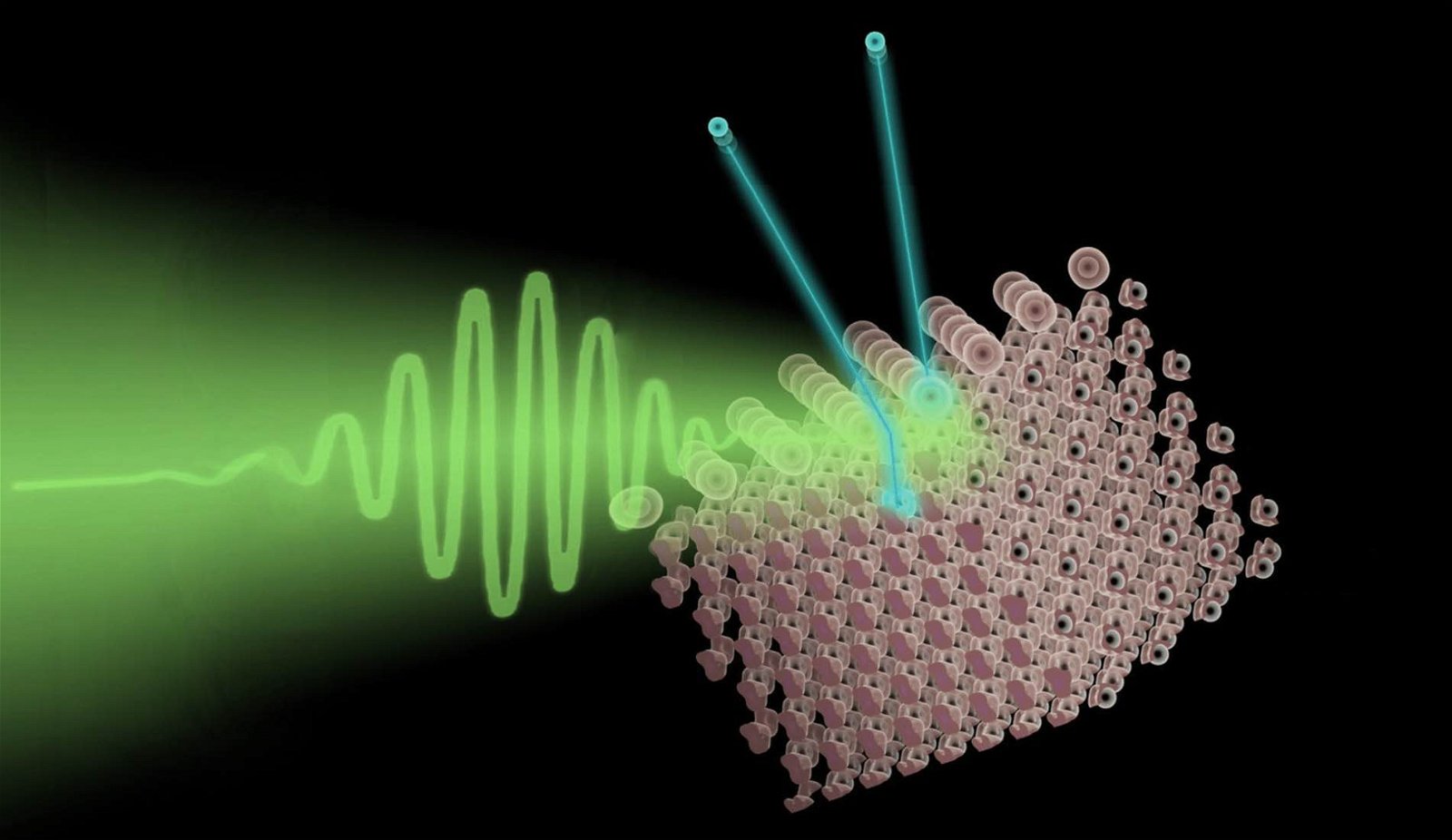Researchers at Northeastern University report a discovery they say could upend our long-held scientific views involving a phenomenon that occurs when light interacts with surfaces.
Photoemission describes the discharge of electrons from a material when light strikes it. Also known as the photoelectric effect, the phenomenon was famously resolved in 1905 by Albert Einstein, who, drawing from Planck’s initial concept that light was a particle, proposed a theory where light consisting of tiny bundles of photons that collide with a surface transfer some of that photonic energy to electrons.
Now, a team of Northeastern researchers says their findings could challenge our understanding of this phenomenon, following the observation of anomalous photoemission properties they describe in a new paper published in the journal Nature.
The unusual properties the researchers describe were observed with a material called strontium titanate, an oxide first used as a diamond stimulant half a century ago. In their study, the Northeastern team used the material as a photocathode, an engineered surface that relies on the photoelectric effect to convert light into electrons.
One reason the researchers chose strontium titanate is because of its absence in past experiments with photocathodes, according to Northeastern physics professor Arun Bansil, one of the study’s co-authors. By employing photon energies in the 10-electron volt (eV) range, Bansil and the team succeeded in producing a “very intense coherent secondary photoemission,” which they say was far stronger than past experiments have ever yielded.
The results of their experiment were significant, Bansil says, because “there is no mechanism within our existing understanding of photoemission that can produce such an effect.”
“We don’t have any theory for this,” Bansil said in a statement, calling the discovery “a miraculous breakthrough” that both furthers our understanding of the phenomenon but also opens the door to new questions.
At the heart of the discovery is what the researchers refer to as secondary electron emission, which involves how primary electrons experience energy loss when they collide with a material’s surface. While primary electrons, according to Bansil, have not yet scattered, secondary electrons, by contrast, have “undergone collisions before they’ve come out of the solid.”
Bansil and the Northeastern team write that the observations point to “underlying novel processes” that they say remain unexplained for now “on top of those encompassed in the current theoretical photoemission framework.”
Such results can be humbling for scientists like Bansil and his colleagues, who had not expected a discovery that would fundamentally challenge what they all accepted as concepts in physics that were already well recognized.
“We all thought we understood the basic physics involved here,” Bansil said, “to the point where the development of applications is pursuant to a certain paradigm of theory and thought,”
“As nature often does, this is where this paper throws a curveball at all of this.”
Bansil and the team’s paper, “Anomalous intense coherent secondary photoemission from a perovskite oxide,” appeared in Nature on March 8, 2023.

